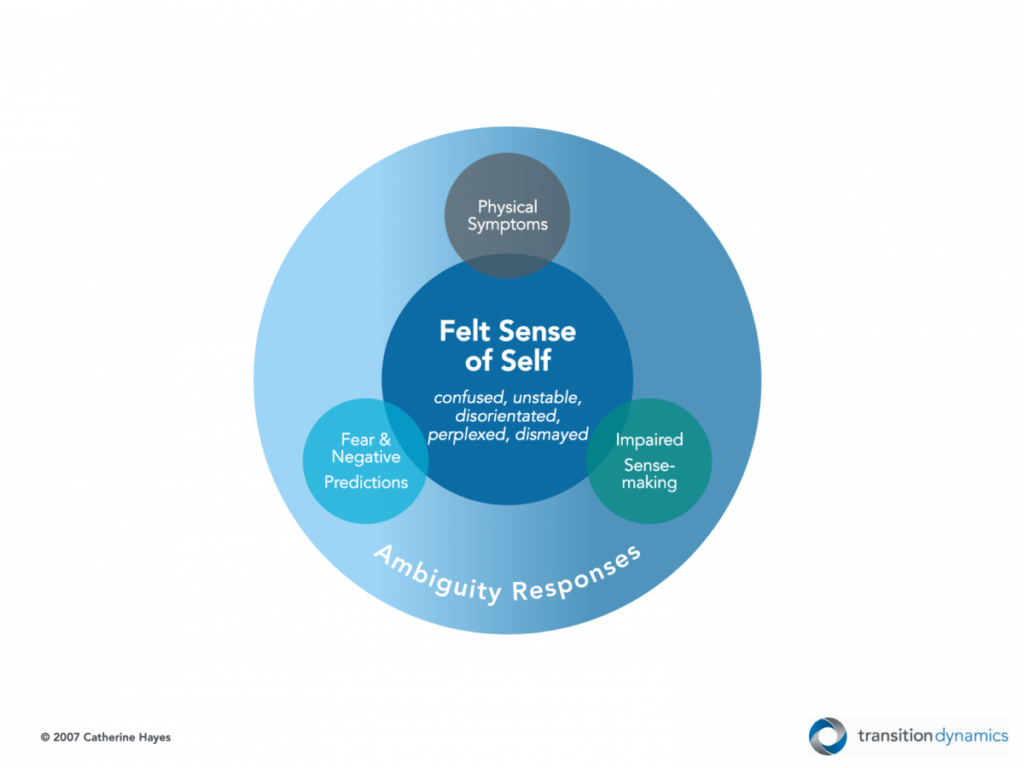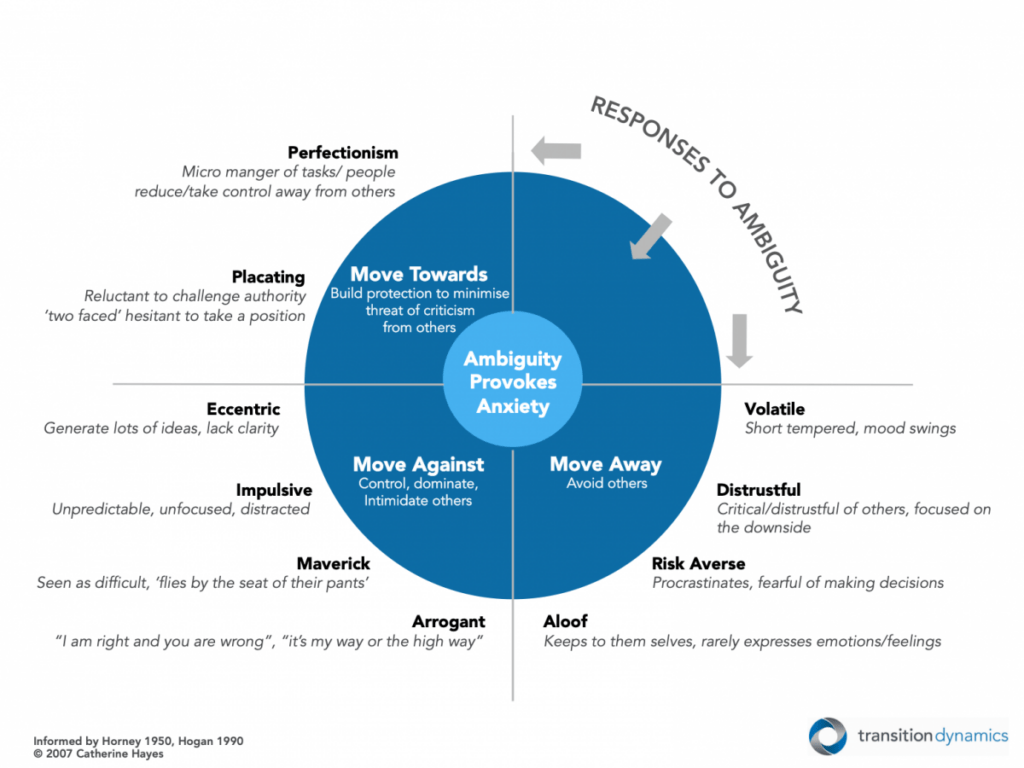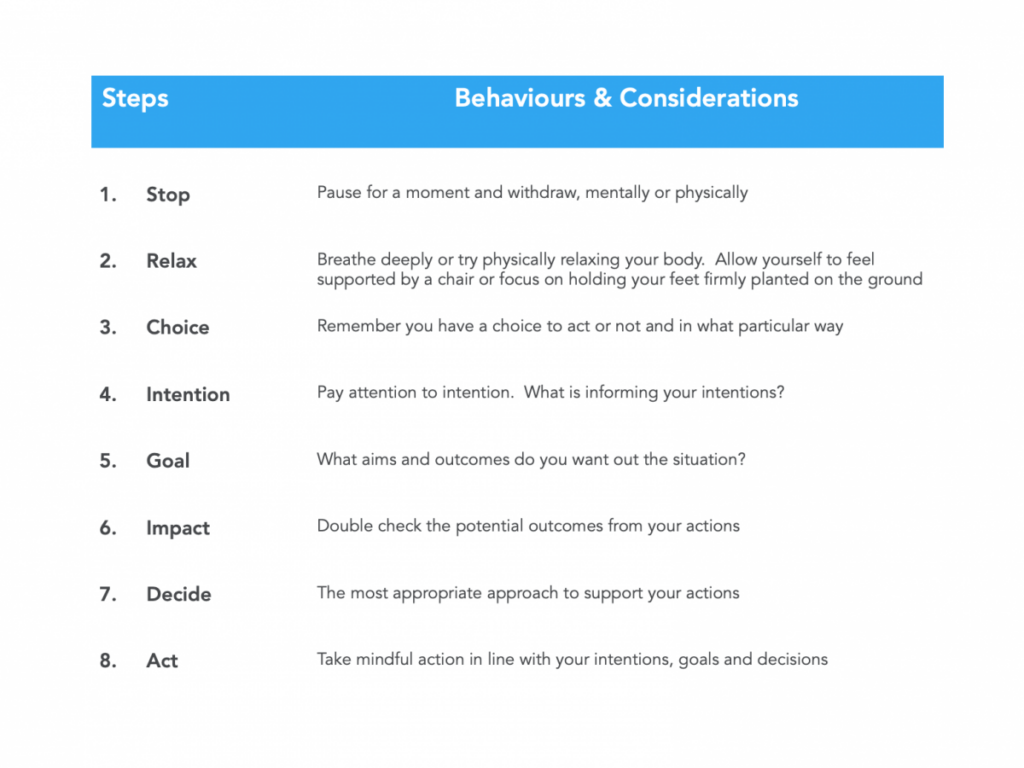Supporting Your Organisation When The World Feels Like it’s Going to Hell in a Handbasket
In the unprecedented state we find ourselves in, we are all living in a world that is encased in a fog of ambiguity. For some of us depending on the context, ambiguity can be seen as exciting and creates the opportunity for new and different. For others regardless of context ambiguity can generate anxiety and overwhelm. The key determining success factors for navigating these challenging territories is understanding the nature of our relationships with ambiguity how we and others are experiencing and working with it..….
Our Western mindsets are conditioned to favour certainty, control and knowing. Over the centuries of human existence, our mind/body systems have become so hard-wired with the need for certainty, that not-knowing and ambiguity can be seen and experienced as a threat. I have found that this is the core foundation why navigating and working with environments of continuous change has become such a challenge in today’s organisations.
Ambiguity Anxiety Symptoms & Causes
Researching and supporting organisations to work with the dynamics of ambiguity anxiety over the last 20 years, I have uncovered that key symptoms show up in a number of forms. It all comes down to the different ways that people process their experiences of ambiguity.
For some people, the trigger is not being able to think straight or make sense of their experiences. For others, it is represented in emotional responses, or physical ailments, like aches, pains, headaches, tiredness and exhaustion that when combined can also trigger low immune systems.

If you are experiencing negative thoughts, volatile emotions, strange physical sensations, disruption in sleep patterns, weight loss or gain and/or on the receiving end of what appears to be unpredictable ‘wonky’ behaviour, these are common symptoms of ambiguity anxiety.
There are a number of factors that can trigger ambiguity anxiety:
Fear – projected concerns of what might happen in the future
Attachment, Aversion or Anger – to what is perceived or known
Control – requirements to want stability and clarity
Entitlement – to have a social sense of what is right
Because of the different ways that we process our experiences ambiguity anxiety doesn’t always show up as ‘oooowe owe oooo I am feeling anxious’, it makes itself known in different ways, particularly in the context of organisations.
The psychoanalyst, Horney proposes that under the influence of anxiety, people can adopt three strategies to mitigate risk and achieve psychological and/or physical safety. In line with Hogan & Hogan’s research on organisation derailment factors.
In my organisational practice I have found that these strategies can show up in various forms of intentional and unintentional behaviours:
Move Towards – to build protection to minimise the threat of judgement and criticism
Move Against – to control, dominate, intimidate
Move Away – to avoid others and the situation
These strategies can appear as the shadow dark side of people’s personalities, that will often form the basis of what is perceived as politics in organisations. Aspects that can inform patterns in operational functioning and have a significant impact on the cultures, performance, and bottom-line outcomes of organisations.

Levine terms these strategies as fight, freeze and flight responses. Ambiguity anxiety is a complex interconnected mind/body experience. The neuroscientific perspective is that the driving force behind these strategies is our autonomic nervous stress response system. Our nervous systems produce increased levels of cortisol a stress hormone that signals to our brains and bodies that we are under threat. In an attempt to keep ourselves safe, we can often unconsciously deploy these strategies in trying to create stability and avoid danger.
Based on my organisational, clinical and personal discoveries over the last 20 years, I have found that we can’t walk through life without touching these different territories within our relationships with others and ourselves at some point. Given the ambiguous state of our world at present, it is inevitable that anxiety responses are going to increase and be even more prominent. Our potential lies in working with ambiguity and anxiety-driven responses, so that we can create the opportunity to support ourselves, others and society in navigating the complex territories of a continuously evolving unknown future.
Approaches For Working With Ambiguity Anxiety
If politics or what can appear to some as the dark side of personalities begin to emerge, it is a signal that anxiety responses are present in some shape or form. The key is not to add fuel to the fire by acting into challenging experiences or participating in playing the political game. It’s all about how we engage and work with our experience of the ambiguity.
There are a number of approaches that we can apply to support ambiguity anxiety experiences in others and ourselves as and when they appear:
Light Heartedness
As a way of bringing a lighter perspective to my own ambiguity anxieties over the years, I have labelled the experiences as being in ‘wonky donkey’ territory. If I experience myself as having a wonky donkey moment then acknowledging it, helps me to bring a sense of perspective to the situation. If I see others as having wonky donkey moments then I can bring care and compassion into that relationship to support them with their challenges. It also helps in times when I am the person who is on the receiving end of ambiguity responses, to not take their behaviour personally.
Creating a Supportive Context
Sometimes the primary need is not to resolve an issue or fix a problem. All we and others want is to be seen understood and acknowledged. We can create safe supportive environments through a few key behaviours and the qualities that we bring into our relationships.
Listening – not so that we can respond, purposefully listening is about focusing our attention on being fully present in the moment, hearing and understanding what is being said.
Suspend Judgment – two people can have the same experience and have very different responses. Just because we may not see something as challenging doesn’t mean that this is the case for others. We can’t fully support, hear and honour the experiences of others if we are diverting our attention inwards and making judgements.
Reserve Interpretation – sometimes our perceptions of the experiences of others can be out of kilter with the realities of what is happening under the surface. Many people struggle to show and acknowledge their vulnerabilities, to themselves, let alone others. Vulnerabilities can often show up as anger that can be triggered by conscious and unconscious derivatives of hurt. Checking out our understanding and what we think we have heard helps to focus, ground and contain the experience.
Supportive Qualities
Whilst listening, engaging and being present with the experiences of others are useful, there are also a number of additional qualities that we can utilise to establish an empathetic supportive context.
Equanimity – calmness and composure
Compassion – sympathetic concern
Kindness – tenderness and consideration
We don’t have to say anything just holding these qualities within ourselves, means that we resonate our supportive intentions to others. Although a key factor to take into consideration is regardless of how many of these qualities we hold for others they can only meet us where they are, not where we may want them to be.
A key philosophy that I hold dear to my heart is that we can’t lead others until we can lead ourselves. These approaches and resources are also the aspects that we can bring to the nature of the relationship we have with ourselves. We can’t support others until we support ourselves, if we are criticising, judging, bullying, shaming, pushing or beating ourselves up to be or do more than we are. Yet if we can pay attention and listen to our internal dialogue and direct some empathetic qualities towards ourselves, we can create our own inner self-supportive environments.
Overwhelm Strategies
Sometimes no matter how much we try to work with and contain our anxiety responses, the pressure becomes too much, the lid flies off, we can’t contain the explosion of what we have been trying to keep tabs on. When these instances do appear, all is not lost; there are a few strategies that can help to contain the experience so that we don’t lose the plot completely.
Managing Thresholds
This strategy is particularly helpful for threshold situations when there is a severe sense of humour failure. Moments when we or others are about to chew someone, spit them out or rip them a new backside.

Gaining Perspective
This strategy is particularly useful at times when everything seems too much, it feels like our whole world experience has gone to hell in a handbasket and its hard to put things into context.
Aspect Is the ambiguity real or projected fear about might happen?
Spaces What specifically is known and unknown?
Edges Where does the ambiguity begin and end?
Relationships What is the ambiguity related or connected to?
Light Where is there some light or clarity regardless of how small?
Shadows Are there any grey areas?
Whole How does the ambiguity relate to your immediate environment?
While everything may seem too much to cope with, a key factor to keep in mind is that something isn’t or hasn’t happened until it comes into practical or known reality. And the more we can focus on what is real as opposed to leaning into the fearful projected fantasies about the unknown future then we gain a chance of bringing some relief and resources to contain the wonky donkey symptoms of overwhelming.
If the symptoms of political behaviour appear out of thin air, hopefully by now you will have insight into the causes and some approaches and strategies for how to engage others to create safe environments. If you are experiencing or find yourself in the wonky donkey territory of others, in work or at home, I hope these approaches and strategies support you as much as they have done for me and my work in supporting organisations to navigate complex territories of change.
In a follow-up article, I will share additional practical approaches for how leaders can create safe and supportive environments for their organisations.





